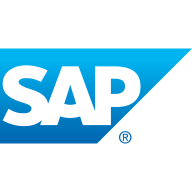

Find out in this report how the two Hadoop solutions compare in terms of features, pricing, service and support, easy of deployment, and ROI.
We do not feel we're getting value for the investment due to the additional resources needed for integration and maintenance.
SAP HANA is a cost-saving solution that helps save money and serves as a time-saving solution that helps save time.
Technical support is very costly for me, accounting for twenty-five to thirty percent of the product cost.
The community support is better than the official SAP support.
While issues are resolved eventually, the first level of support is not as good as we would like.
Time to respond to SAP support is an issue, and finding the right person and handling the whole process are problems too.
It is provided as a pre-configured box, and scaling is not an option.
Our operations have grown from a hundred data operations a day to as many in a couple of seconds.
There is enough scalability offered by SAP to meet our deployment needs.
The scalability rating is based on the ability to expand.
We recently faced customer data loss during the cluster handover or failover fallback.
We have not had any problems in the last seven to eight years.
Regarding stability, they are using legacy systems and have implemented SAP HANA.
The cloud version is only available in AWS, and in the Middle East, it is not well-developed in the Azure environment.
Licensing costs with SAP HANA are very high.
The setup process and deployment process for SAP HANA is complex.
Many customers still prefer Oracle, possibly due to cost or familiarity, despite SAP mandating that they have to go to SAP HANA.
It's a recurring subscription model, which is expensive compared to legacy systems with just a maintenance fee.
I would rate the price for SAP HANA as high.
The pricing of SAP HANA is quite expensive.
It operates as a high-speed data warehouse, which is essential for handling big data.
The concept enhances speed, allowing the database to serve and move data quickly.
It allows some tables to be stored in a column base, others in a row base, and the In-Memory functionalities are mostly the highlight of SAP HANA, especially compared to disk-based memory users.
This architecture allows for faster data processing and real-time analytics that were not possible with traditional databases.

| Company Size | Count |
|---|---|
| Small Business | 9 |
| Midsize Enterprise | 5 |
| Large Enterprise | 33 |
| Company Size | Count |
|---|---|
| Small Business | 26 |
| Midsize Enterprise | 11 |
| Large Enterprise | 61 |
IBM Netezza Performance Server offers high performance, scalability, and minimal maintenance. It seamlessly integrates SQL for efficient data processing, making it ideal for enterprise data warehousing needs.
IBM Netezza Performance Server is known for its outstanding data processing capabilities. Its integration of FPGA technology, compression techniques, and partitioning optimizes query execution and scalability. Users appreciate its appliance-like architecture for straightforward deployment, distributed querying, and high availability, significantly boosting operations and analytics capabilities. However, there are areas for improvement, particularly in handling high concurrency, real-time integration, and specific big data functionalities. Enhancements in database management tools, XML integration, and cloud options are commonly desired, along with better marketing and community engagement.
What are the key features of IBM Netezza Performance Server?Industries rely on IBM Netezza Performance Server for robust data warehousing solutions, particularly in sectors requiring intensive data analysis such as finance, retail, and telecommunications. Organizations use it to power business intelligence tools like Business Objects and MicroStrategy for customer analytics, establishing data marts and staging tables to efficiently manage and update enterprise data. With the capacity to handle large volumes of compressed and uncompressed data, it finds numerous applications in on-premises setups, powering data mining and reporting with high reliability and efficiency.
SAP HANA, also known as SAP High-performance Analytics Appliance, is a multi-model database that stores data in its memory, allowing users to avoid disk storage. The product combines its robust database with services for creating applications. SAP HANA is faster than other database management systems (DBMS) because it stores data in column-based tables in main memory and brings online analytical processing (OLAP) and online transaction processing (OLTP) together.
The column-oriented in-memory database design allows users to run high-speed transactions alongside advanced analytics, all in a single system. This provides companies with the ability to process very large amounts of data with low latency and query data in an instant. By combining multiple data management capabilities, the solution simplifies IT, helps businesses with innovations, and facilitates digital transformation.
The solution is structured into five groups of capabilities, categorized as:
There are three more SAP products that work alongside SAP HANA and complete the experience for users together. SAP S/4HANA Cloud is a ready-to-run cloud enterprise resource planning (ERP). SAP BW/4HANA is a packaged data warehouse, based on SAP HANA, which allows users to consolidate data across the enterprise to get a consistent view of their data. Finally, SAP Cloud is a single database as a service (DBaaS) foundation for modern applications and analytics across all enterprise data. All three products can combine with SAP HANA to deliver to users an optimized experience regarding their data.
SAP HANA Features
Each architectural group of capabilities of SAP HANA has various features that users can benefit from. These include:
SAP HANA Benefits
SAP HANA provides many benefits for its users. These include:
Reviews from Real Users
According to a database consultant at a pharma/biotech company, SAP HANA is a very robust solution with good data access.
Bruno V., owner at LAVORO AUTOM INF E COM LTDA, likes SAP HANA because the product offers advanced features, helps reduce hours, and makes it easy to find what you need.
We monitor all Hadoop reviews to prevent fraudulent reviews and keep review quality high. We do not post reviews by company employees or direct competitors. We validate each review for authenticity via cross-reference with LinkedIn, and personal follow-up with the reviewer when necessary.